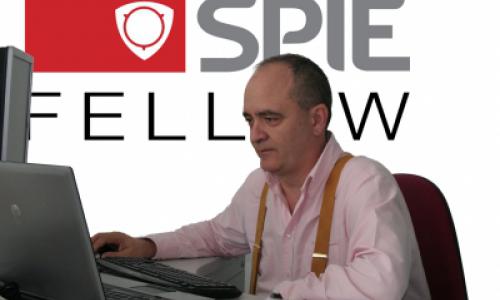Juan Carlos Miñano Elegido SPIE Fellow
Monday, 3 June 2013

BELLINGHAM, WA, USA — 29 May -- SPIE will promote 69 new Fellows of the Society this year, to recognize the significant scientific and technical contributions of each in the multidisciplinary fields of optics, photonics, and imaging. SPIE Fellows are honored for their technical achievements and for their service to the general optics community and to SPIE in particular. More than 1,000 SPIE members have become Fellows since the Society’s inception in 1955.
Miñano has made many significant contributions to the field of nonimaging optics. His work in the area of illumination optics and optics of concentrators is extensive, innovative and useful. His research has had a major impact on the area of solar concentrators and also impacted and increased the efficiency of light collection for LED sources. His key contributions are development of the Poisson brackets method of design of nonimaging optics, the development of the SMS design method for nonimaging optics, the first rigorous proof of the Edge Ray Principle for continuous systems, the introduction of a new etendue invariant in the field (for 2D-subdomains of phase space) in nonimaging optics, the calculation of the thermodynamic limits of concentration for non-homogeneous extended sources, and development of the theory and applications of internal and external confinement limits in solar cells, which allowed the construction of a concentration system with GaAs and Si cells
Co-author of the book Nonimaging Optics, Miñano has published 12 book chapters, 38 papers, over 130 conference communications. Miñano’s contributions in nonimaging optics have gone much further than the development of theory: he has promoted the use of his state of the art designs and methods to the design of practical devices in multiple applications. As a consequence of this, he has more than 40 patent applications in the field, many of them being licensed at present. He has been actively participating in the major conferences in optical design with invited contributions during the last decade. He is also currently teaching optics at the master and at PhD level.
Miñano’s commitment to SPIE is evidenced by his willingness to serve on the program committees of Nonimaging Optics: Maximum Efficiency Light Transfer V-VII and Nonimaging Optics: and Efficient Illumination System I-V.
